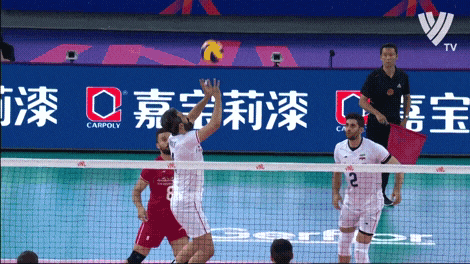Beginner Volleyball Passing Drills to Elevate Your Game

Volleyball, with its fast paced action and strategic maneuvers is a sport that demands skillful execution of fundamental techniques. Among these, passing stands out as a critical skill that lays the groundwork for successful plays. Whether you’re a novice player eager to learn or someone looking to refine their skills, mastering passing drills is essential.
In this article, we’ll explore a variety of beginner volleyball passing drills designed to improve your technique, coordination and confidence on the court.
Understanding the Importance of Passing
Passing, also known as bumping or forearm passing, is the act of using your forearms to redirect the ball to a teammate in a controlled manner. It is a fundamental skill that forms the basis for effective ball movement and sets in volleyball.
A strong passing game enables teams to maintain possession, initiate offensive plays and ultimately score points. Additionally, proficient passing minimizes errors and allows for smoother transitions between defense and offense.
The Basics: Proper Technique
Before delving into passing drills, it’s crucial to establish a solid foundation of proper passing technique. Here’s a breakdown of the key elements:
| Technique | Description |
|---|---|
| Body Position | Stand with feet shoulder width apart, knees slightly bent and weight balanced evenly. Maintain a relaxed stance with arms extended forward. |
| Hand Placement | Form a platform with your forearms by overlapping your wrists, keeping your thumbs parallel and pointing downward. This creates a solid surface for consistent ball contact. |
| Contact Point | Make contact with the ball using the flat part of your forearms, around the midpoint between wrists and elbows. Aim to cushion the impact, directing the ball upward and toward your intended target. |
Now that we’ve covered the basics, let’s explore a series of beginner friendly passing drills:
Drill 1: Partner Passing
Partner passing drills emphasize communication, accuracy and consistency in passing. Pair up with a teammate and stand facing each other on opposite sides of the court.
| Steps | Description |
|---|---|
| Short Distance Passes | Begin with short distance passes, focusing on maintaining a steady rhythm. |
| Increase Distance | Gradually increase the distance between partners to challenge accuracy and control. |
| Verbal Communication | Encourage verbal cues to communicate positioning and timing. |
| Consecutive Passes | Aim for consecutive passes without allowing the ball to touch the ground. |
Drill 2: Wall Passing
Wall passing drills help develop reflexes, agility and ball control. Stand a few feet away from the wall, facing it with your arms ready in passing position.
| Steps | Description |
|---|---|
| Passes Against the Wall | Execute passes against the wall, ensuring the ball returns at varying angles and speeds. |
| Reflex Training | Focus on quick adjustments to intercept the ball’s trajectory, mimicking game time scenarios. |
| Consistency and Technique | Strive for consistent ball placement and technique, maintaining proper form with each pass. |
| Intensity Adjustment | Increase the intensity by incorporating lateral movement or alternating between forehand and backhand passes. |
Drill 3: Triangle Passing
Triangle passing drills enhance teamwork and spatial awareness, involving multiple players in a coordinated passing sequence.
| Steps | Description |
|---|---|
| Passing Triangle Formation | Player A initiates the drill by passing the ball to Player B. |
| Rotation of Positions | Player B receives the pass and directs it to Player C, completing the triangle. |
| Position Rotation | Rotate positions after each pass, ensuring all players have opportunities to pass and receive. |
| Emphasis on Fluidity | Emphasize fluidity and timing, aiming for seamless transitions between passes. |
Drill 4: Target Passing
Target passing drills improve accuracy and aim by incorporating designated zones on the court as passing targets.
| Steps | Description |
|---|---|
| Utilizing Targets | Start with stationary targets and gradually progress to moving targets for added challenge. |
| Accuracy Focus | Focus on accuracy by aiming for the designated zones with each pass. |
| Experimentation | Experiment with different passing angles and distances to target areas of the court. |
| Competitive Element | Incorporate competitive elements by setting targets at varying heights or distances, rewarding successful passes with points. |
Conclusion
Mastering volleyball passing drills is a journey that requires dedication, patience and perseverance. By incorporating these beginner friendly exercises into your training regimen, you’ll develop essential skills that form the bedrock of a successful volleyball player.
Remember, consistency and attention to detail are key as you strive to elevate your passing game. With practice and determination, you’ll unlock your potential and contribute significantly to your team’s success on the court.
So, grab your volleyball, gather your teammates and embark on a journey toward passing proficiency and volleyball excellence.


